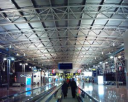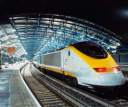
Conference Location

History
 Bruges (Dutch: Brugge), sometimes called "The Venice of the North"is the capital and largest city of the province of West Flanders in the Flemish Region of Belgium. It is located in the northwest of the country. The historic city centre is a prominent World Heritage Site of UNESCO. The city's total population is more than 117,000, of which around 20,000 live in the historic centre.
Bruges (Dutch: Brugge), sometimes called "The Venice of the North"is the capital and largest city of the province of West Flanders in the Flemish Region of Belgium. It is located in the northwest of the country. The historic city centre is a prominent World Heritage Site of UNESCO. The city's total population is more than 117,000, of which around 20,000 live in the historic centre.
|
Very few traces of human activity date from the Pre-Roman Gaul era. The history of Bruges begins around 2000 years ago when the first fortifications were built after Julius Caesar's conquest of the Menapii in the first century BC, to protect the coastal area against pirates. At that time there a Gallic-Roman settlement was established on the site of the city. The inhabitants did not live by agriculture alone, they also traded with England and the rest of Gaul. Around 270 the Germanic people attacked the Flemish coastal plain for the first time. The Romans probably still had a military fortification here at the end of the third century and during the fourth century. So it is very possible that Bruges was inhabited in the transition period to the early Middle Ages. When Saint Eligius came to spread Christianity in our area around 650, Bruges was perhaps the most important fortification in the Flemish coastal area. |
|
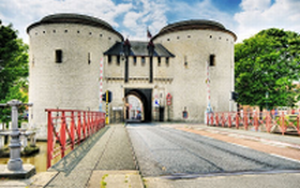
|
The Franks took over the whole region from the Gallo Romans around the 4th century and administered it as the Pagus Flandrensis. The Viking incursions of the ninth century prompted Baldwin I, Count of Flanders to reinforce the Roman fortifications; trade soon resumed with England and Scandinavia. It is at around this time that coins appeared for the first time bearing the name Bryggia. The name Bruges in fact comes from the Old Norse "Bryggja" which means landing stage and has appeared on documents and coins since the middle of the ninth century. At that time there was already a strong citadel in Bruges (the Burg). |
|
The second area of occupation outside the Burg was close to the present day Steenstraat and the Oude Burg. It was here that the city grew fastest until around 1100. The two oldest parish churches in Bruges, the Church of Our Lady St.-Saviour's, were then at the edge of this district. They date from the ninth century. Bruges got its city charter on July 27, 1128 and built itself new walls and canals. In the eleventh century Bruges had expanded to become a commercial centre for Europe. But during this period the natural link between Bruges and the sea silted up. A storm flood in 1134 changed the appearance of the Flemish coastal plain however. A deep channel appeared, the Zwin, which at the time reached as far as present day Damme. The city remained linked to the sea until the fifteenth century via a canal from the Zwin to Bruges. But Bruges had to use a number of outports, such as Damme and Sluis for this purpose. |
|
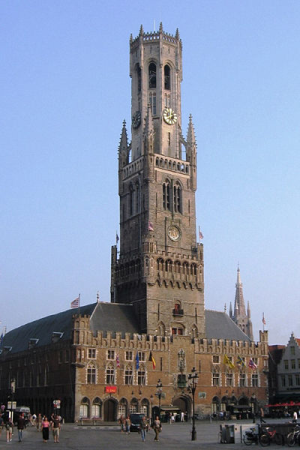
|
Thus in the Middle Ages it was possible for Bruges to become the most important trade centre of north-western Europe. From the thirteenth to the fifteenth centuries Bruges had between 40,000 and 45,000 inhabitants, double the number now in the historic inner city. With the reawakening of town life in the twelfth century, a wool market, a woollens weaving industry, and the market for cloth all profited from the shelter of city walls, where surpluses could be safely accumulated under the patronage of the counts of Flanders. Bruges was already included in the circuit of the Flemish cloth fairs at the beginning of the thirteenth century. The city's entrepreneurs reached out to make economic colonies of England and Scotland's wool-producing districts. English contacts brought Normandy grain and Gascon wines. Hanseatic ships filled the harbor, which had to be expanded beyond Damme to Sluys to accommodate the new cog-ships. In 1277, the first merchant fleet from Genoa appeared in the port of Bruges, first of the merchant colony that made Bruges the main link to the trade of the Mediterranean. This development opened not only the trade in spices from the Levant, but also advanced commercial and financial techniques and a flood of capital that soon took over the banking of Bruges, where brokers and landlords ruled economic life. The Bourse opened in 1309 and developed into the most sophisticated money market of the Low Countries in the fourteenth century. By the time Venetian galleys first appeared, in 1314, they were latecomers. |
|
|
|
|
The differences in income, however, between the ordinary people (the tradesmen) and the merchant entrepreneurs (the patricians) were huge, regardless of those in the middle) gave rise to social upheavals. Violent revolts, like those of 1280 and 1436-1438 were roughly suppressed. In 1302, however, the population joined forces with the Count of Flanders against the French, culminating in the victory at the Battle of the Golden Spurs, fought near Kortrijk on July 11. The statue of Jan Breydel and Pieter de Coninck, the leaders of the uprising, can still be seen on the Big Market square. The fourteenth century, a period of crises for Bruges and Flanders with revolts, epidemics, political unrest and war, ended with the dynastic merger of Flanders and Burgundy. |
|
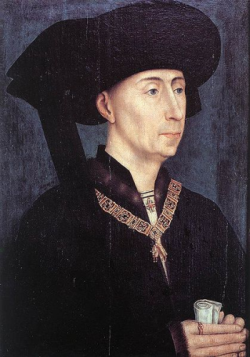
|
The Burgundian period in Bruges started in 1384 when Philip the Good, duke of Burgundy set up court in Bruges, as well as Brussels and Lille, attracting a number of artists, bankers, and other prominent personalities from all over Europe. The new Flemish-school, oil-painting techniques gained world renown. The first book in English ever printed was published in Bruges by William Caxton. This is also the time when Edward IV and Richard III of England spent time in exile here. The population swelled to more than 40,000 inhabitants. Bruges would remain the most important trade centre to the north of the Alps for another century. Cloth production was partly replaced by luxury goods, banking services, crafts. The Burgundian court provided a great deal of local purchasing power. This was promoted further by the foreign merchants with their international contacts from Portugal to Poland. Prosperity increased, travellers came and were deeply impressed by the sumptuousness and luxury of the city scene. Art and culture flourished as never before. But all this came to an end with the sudden death of Mari of Burgundy in 1482. The revolt against her widower Maximilian of Austria meant that Bruges suffered political uncertainty and military force for ten years. Local prosperity disappeared from the city along with the Burgundian court and the international traders. |
|
Starting around 1500, the Zwin channel, which had given the city its prosperity, also started silting. The city soon fell behind Antwerp as the economic flagship of the Low Countries. The split from the Netherlands, final from 1584, led to the final decline of Bruges. During the 17th century, the lace industry took off and various efforts to bring back the glorious past were made. During the 1650s the city was the base for the court of Charles II of England and his court in exile. The maritime infrastructure was modernized, and new connections with the sea were built, but without much success. Bruges became impoverished and gradually disappeared from the picture. |
|
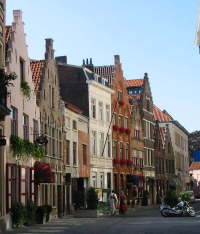
|
Bruges experienced the revolution period from 1789 to 1830 in a passive way. The first industrial revolution hardly disturbed the city. Around 1850 Bruges was the poorest city in the country. The middle classes spoke French, the illiterate people only knew their local dialect. French was decreed to be the official language for public life in 1885. But Guido Gezelle (1830-1899), the most important Dutch speaking poet of the nineteenth century, was a native of Bruges. In European literature Bruges was made famous by the French language novel "Bruges la Morte" by the symbolist novelist Georges Rodenbach (1892), which was adapted into Erich Wolfgang Korngold's opera, 'Die tote Stadt (The Dead City). The book describes Bruges as a sleeping, dead, but mysterious city. |
|
In the last half of the 19th century Bruges became one of the world's first tourist destinations attracting wealthy British and French tourists as the city became known throughout Europe as a city of art and a tourist centre. The new sea-port, inaugurated in 1907 in Zeebrugge, did not achieve full prosperity until the last quarter of the twentieth century. The Germans used it for their U-boats in World War I. It was greatly expanded in the 1970s and early 1980s and has become one of Europe's most important and modern ports. |

|
The Bruges monuments, museums and particularly the unspoilt historic cityscape attract millions of visitors every year which resulted in Bruges being designated 'European Capital of Culture' in 2002.
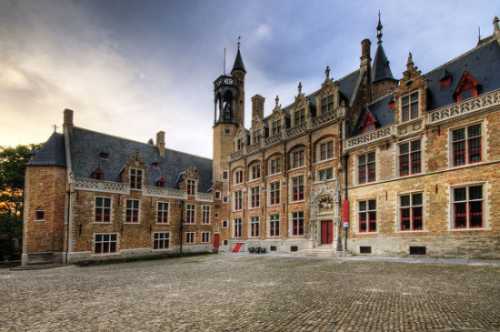
The Gruuthuuse Museum
Places to visit
* Church of Our Lady, The sculpture Madonna and Child, which can be seen in the transept, is believed to be Michelangelo's only sculpture to have left Italy within his lifetime.
* 13th-century Belfry
* The Beguinage
* The Basilica of the Holy Blood (Heilig-Bloedbasiliek). The relic of the Holy Blood, which was brought to the city during the First Crusade, is paraded every year through the streets of the city. More than 1,600 inhabitants take part in this mile-long religious procession, many dressed as medieval knights or crusaders.
* The Old St-John's Hospital
* The Saint-Salvator Cathedral
* The Groeningemuseum
* The City Hall on the Burg square
* The Provincial Court (Provinciaal Hof)
* The old city gateways: the Kruispoort, Gentpoort, Smedenpoort and Ezelpoort.
Some more impressions of Bruges can be found here.
Parts of this text were copied from  and
and 
Conference Venue

|
Novotel Brugge Centrum All meetings will be held in the rooms on the right of the main entrance. |
Getting to Bruges and the Novotel
By Plane
|
When you travel to Bruges by plane then the closest two airports are either Brussels International Airport or the Aeroport de Lille in France. When arriving in Brussels it will most probably be with Brussels Airlines. From both Airports you can get by train to Bruges. Time from Brussels (1hour 50min) and from Lille (also about 1hour 50min). Once outside the luggage area at Brussels airport go down to level -2 for your train connection. This exit is to the right in front of you. You can either take the escalator or elevators down. All trains you need go through Brussels. Change trains at Station Brussels North. There you can take the IC-train to Ostend (around the hour) or to Knokke-Blankenberge (around the half-hour). Train journey from Brussels to Bruges (BRUGGE) is about 1 hour. |
By Train |
You can also travel of course by Eurostar from London to Brussels or by TGV from Paris or ICE from Germany. In this case you need to change trains in Brussels South station. (BRUSSEL-ZUID - BRUXELLES-MIDI). Travel time to Bruges (BRUGGE) about 45 min. Again take the IC-train either to Ostend or Knokke-Blankenberge. Bruges is the 2nd stop. |
By Bus |
When you arrive at the train station in Bruges (BRUGGE) go down and take the exit city centre. Just outside you will find the bus stop or the taxi stand. See "De Lijn" website for more info on lines that come close by the hotel. |
By Taxi |
When you arrive at the train station in Bruges (BRUGGE) go down and take the EXIT CITY CENTRE. Just outside you will find the taxi stand. Taxis can also be booked. |
By Car |
From Gent via the A10 (E40) follow signs for Oostende, take exit No.9 for Oostkamp, then head to Brugge (5 km), then Parking Begijnhof (public parking under the hotel).From Oostende via the A10 (E40) follow signs for Gent, take exit No.8 then follow St.Michiels, continue past the 2 roundabouts, under the railway bridge and then head to Parking Begijnhof (public parking under the hotel).From Lille or Kortrijk via the A17 (E403) follow Brugge, then St Michiels and continue as above. See the location map on the hotel page. |
By Foot
|
You can of course also walk to the hotel from the station, which should take you some 20 mins. |
Bruges City Centre Maps
You can find detailed street maps of Bruges following this link.
Useful Links
|
|
|

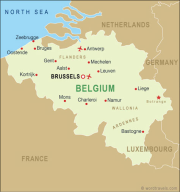
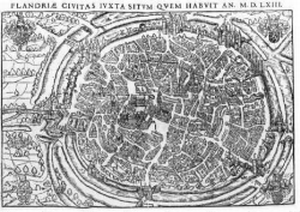
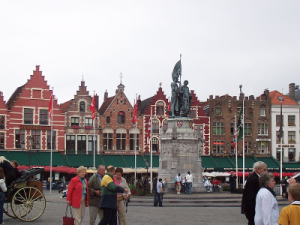
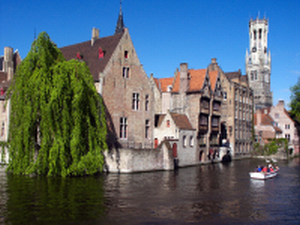
 Tel: +32.50 33 75 33
Tel: +32.50 33 75 33 Fax: +32.50 33 65 56
Fax: +32.50 33 65 56 E-Mail:
E-Mail: 
